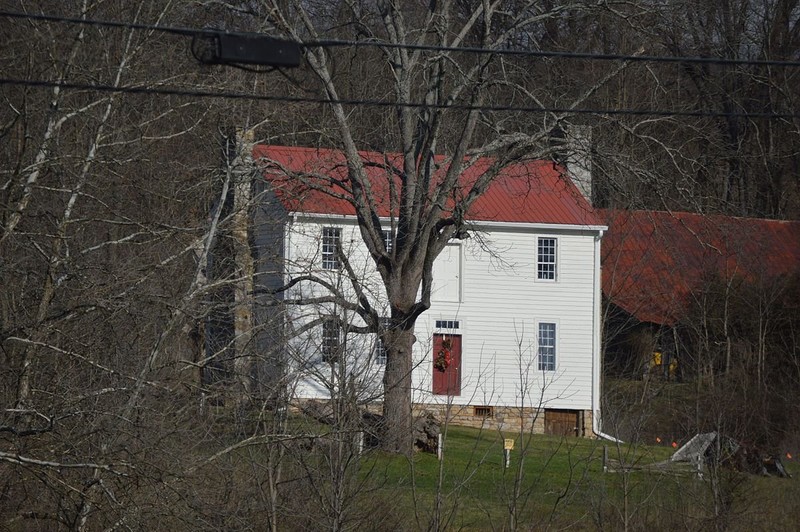Walnut Grove
Introduction
Text-to-speech Audio
Images
Walnut Grove facade

Backstory and Context
Text-to-speech Audio
In 1773, Robert Preston immigrated at the age of 23 from Derry, Ireland to the British colony of Virginia. His first cousin Colonel William Preston was already well-established in Western Virginia, owning Smithfield Plantation on what is now the Virginia Tech campus in Montgomery County. For the next six years, Robert learned the trade of land surveying and worked his way up the political ladder through William’s connections. In 1779, Robert moved to Washington County. In February 1780, he surveyed lots for the newly founded county seat of Abingdon; and later that Spring, he paid 20,000 pounds to the Commonwealth of Virginia for the purpose of receiving a surveyor’s bond, making him Washington County’s first land surveyor. Thomas Jefferson was governor of Virginia at that time and signed Preston’s surveyor bond.
In 1779, Robert Preston acquired a large tract of farmland in what is now Bristol, Virginia and married his second cousin Jenny Preston, of Smithfield Plantation in Montgomery County. Shortly thereafter, Robert responded to the call to arms raised by William Campbell and Evan Shelby and marched with the Overmountain Men to Kings Mountain, SC to defeat the British at the Battle of Kings Mountain. Preston survived and returned home to start a family with Jenny. The couple had two sons, John and Alexander, and one daughter named Sarah. Throughout his life, Preston would not only act as surveyor but as Washington County Sheriff and Justice of the Peace, and in 1803 he was commissioned as a Captain in the Light Infantry Battalion of the 105thRegiment of Virginia. His accomplishments allowed him to accumulate a significant amount of wealth.
Around the turn of the 19th-Century, Robert Preston constructed a large Georgia style house on his ever-growing estate. This house is constructed in a typical I-house arrangement with an ashlar limestone foundation and two limestone exterior end chimneys. This house became one of Southwest Virginia’s earliest examples using timber framing instead of the usual log frame. The roof frame of the house is also unique to the area, as it utilized the new “kicked roof profile” method. The house features a high-style interior design, with detailed wainscoting and carved mantels, a rare occurrence in Virginia’s frontier region and indicative of Preston’s wealth. Preston named his house Walnut Grove, which lent its name to his plantation. Prior to the construction of Walnut Grove, he likely lived in the log building located behind the house before the construction of Walnut Grove.
When Robert Preston passed away in 1832, his estate was considered one of the largest plantations in the area. Walnut Grove consisted of over 1,000 acres, 239 head of livestock, twelve casks of brandy, and 29 slaves named Charlottes, Lewis, Scotty, Cuppy, Aggey, Margaret, Nancy, Susy, Ned, Ellen, Fanny, Bob, Tom, Harriet, Kate, Billy, Moses, Jack, Mary, Joe, Jim, Adam, Henry, Aleck, Sondson, Ann, Sarah, Eliza, and Mary Ann. He also possessed imported several pieces of Irish furniture such as eighteen chairs, eight beds, two cupboards, one bed stand, one desk, one bureau, and one chamber chair. Robert divided Walnut Grove between his children, John received the house and Sarah received several slaves.
John Preston, a prominent Washington County judge, and his wife Margaret Brown Preston raised fourteen children together in Walnut Grove. In 1857, John constructed a newer house on the Walnut Grove plantation which he named The Grove. His son Robert F. Preston moved his family into Walnut Grove by 1861, and in 1864 inherited all of the Walnut Grove estate. From that point, Walnut Grove was passed down through successive generations of Prestons and Sheffeys, into which the Prestons married. The condition of the house slowly deteriorated into a very dilapidated state as it entered the 21st-Century.
In 2000, Walnut Grove and its remaining acreage was sold to Trammell Investments, LLC for commercial development; shortly thereafter, Trammell Investments donated the house to the Bristol Historical Association. Since then, the BHA has worked hard to preserve the house from demolition and further decay. In 2011, the BHA purchased a one-acre portion of the former estate on which the house sits, alleviating the need to have the fragile house moved to a new location. The Bristol Historical Association’s preservation efforts of Walnut Grove are still underway. Walnut Grove was designated a Virginia Landmark on June 16, 2004 and added to the National Register of Historic Places on August 11, 2004.
Sources
095-0022 Walnut Grove. Virginia Department of Historic Resources. November 8, 2018. March 6, 2019. https://www.dhr.Virginia.gov/historic-registers/095-0022/.
Robert Preston Home. Bristol Historical Association. March 6, 2019. https://www.bristolhistoricalassociation.com/robertpreston.html.
Loux, Jennifer R. Walnut Grove Plantation Has Been Given the Approval for Highway Marker from the State of Virginia. Bristol Historical Association. March 15, 2018. March 6, 2019. https://www.bristolhistoricalassociation.com/docs/Walnut-grove-plantation-approval-letter.pdf.
The Robert Preston House at Walnut Grove. The Bristol Historical Association. March 6, 2019. https://www.bristolhistoricalassociation.com/docs/HistoricalBrochureR(1).pdf.
